Taxonomy: Ursus arctos [Linnaeus 1758]: This was the first bear named to science, and the only bear species for which the scientific name has never changed. When Swedish zoologist Carl Linnaeus published the 10th edition of his taxonomic treatise, Systema Naturae, in 1758, his direct knowledge of bears was limited to the European brown bear. He named it Ursus arctos, meaning “bear” [Latin], “bear” [Greek]. Well before Linnaeus, however, a strikingly golden-colored bear was known to occur in the Middle East. It was mentioned a number of times in the Bible. In the early 1800s it was named the Syrian bear (Ursus syriacus), but later was recognized as a brown bear (now U. arctos syriacus). [See separate page: Discovering and Naming Bear Species for Science.]
This species shows wide variation in body sizes, head shape and fur color patterns that prompted considerable taxonomic splitting. At one time, taxonomists classified over 90 brown bear subspecies in North America and 271 in Eurasia. With the advent of genetic tools, there has been a trend toward recognizing fewer subspecies. Some taxonomists now suggest that there are only 2 potential subspecies of brown bears in North America, one on the Kodiak Archipelago (U. arctos middendorffi), and the second all other brown bears on the continent. More genetic structuring has occurred in Europe and Asia, and more subspecies are often recognized, but due to a lack of genetic sampling across this huge area, an objective understanding and review of subspecies is still lacking. Whereas genetic variation is an important biological feature and certainly worth conserving, conservation efforts should focus on discreet populations, regardless of whether they are named subspecies.
Distinctive characteristics: The size of brown bears varies enormously across their broad range. Brown bears living in coastal areas of western North America and eastern Asia, where they feed on spawning salmon, can be larger than the largest polar bears. However, brown bears living in ecosystems with more limited protein sources, such as the Arctic, deserts, or high mountains of Asia, may be less than half as large.
Coat color also varies regionally for this species. As per its common name, the typical coat color is brown, but the shade can vary from chocolate brown to light blond. The so-called Syrian bear of the Middle East is characterized by its golden-colored coat. The grizzly bear of North America is so-named because it often has silvery tips on the guard hairs which give it a grizzled appearance. Conversely, virtually black-colored brown bears are fairly common in some Asian populations, such as the so-called Tibetan “blue bears” (U. arctos pruinosis). Also, a light-colored “collar”, sometimes extending across the chest and around the back of the shoulders, is common in some populations, particularly in Asia.
Brown bears are differentiated from other bears by their dished (concave) face and muscular hump between their shoulders. While many have long front claws (up to 6 cm), used for digging roots and small mammals, claw length varies geographically. Brown bears in Europe and on Hokkaido Island, Japan, generally have shorter claws. Brown bears living in the Gobi desert of Mongolia, where they spend much time digging in gravel soils, have claws that are worn down to stubs.
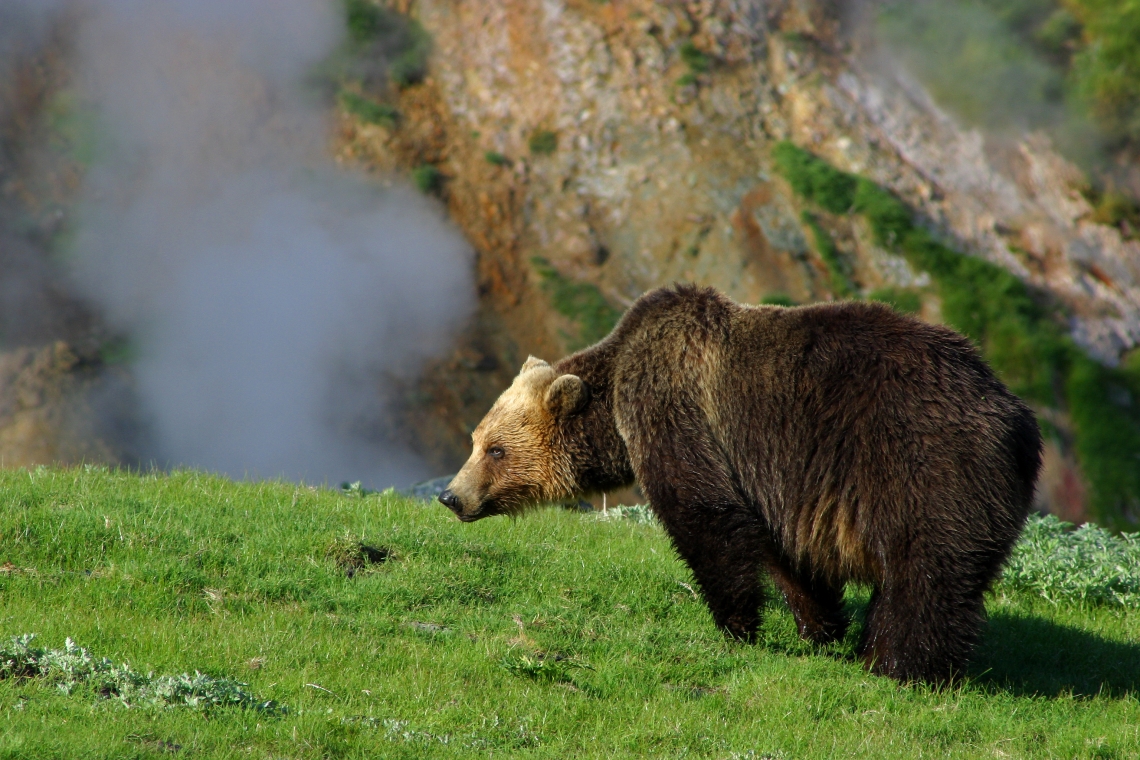
Brown bear_U arctos_Russian Far East_distinctive coat coloration_I Seryodkin
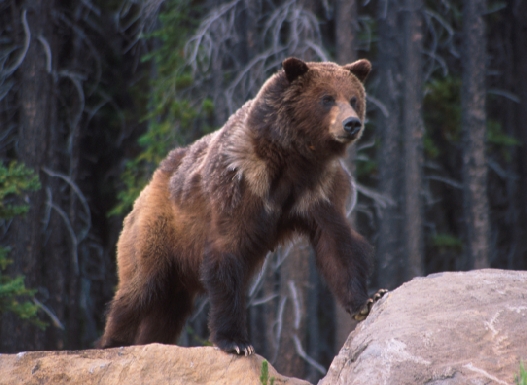
Brown bear_U. arctos_Coastal British Columbia Canada_varying coat color_S Himmer
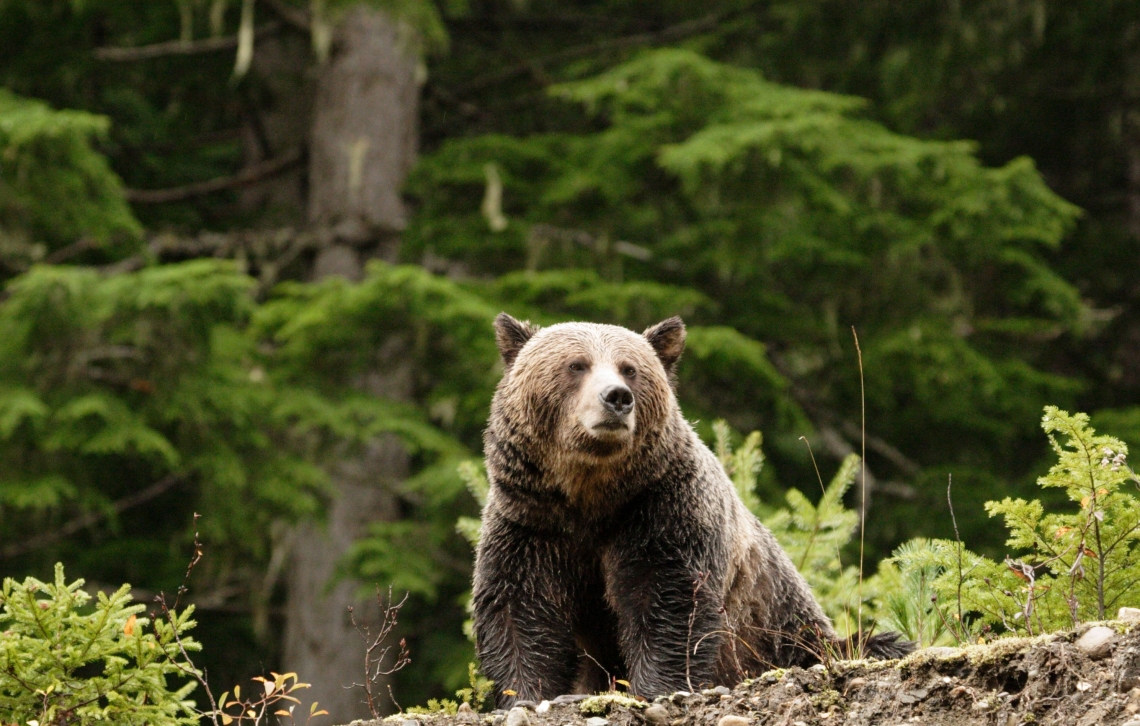
Brown bear_U arctos_Interior British Columbia Canada_grizzled coat_G. MacHutchon
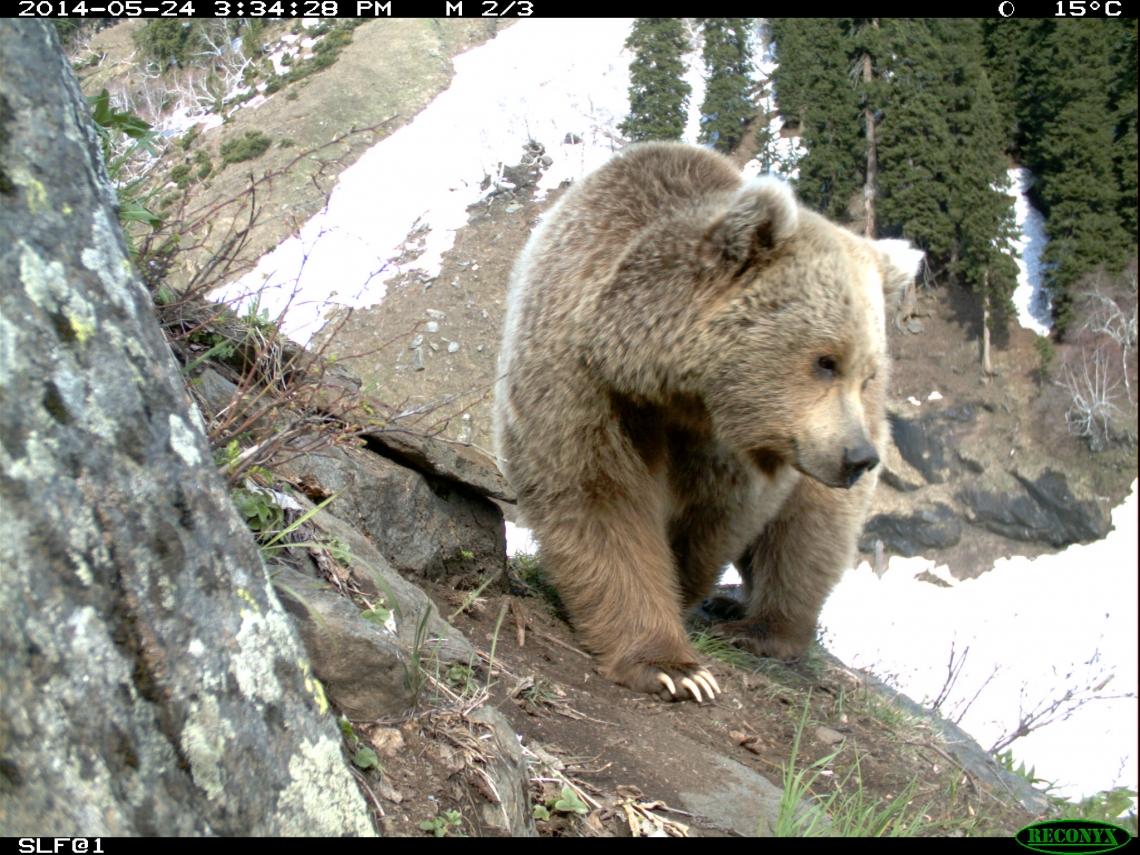
Brown_bear_U arctos_Machiara National Park_light coat_Pakistan_S Hameed
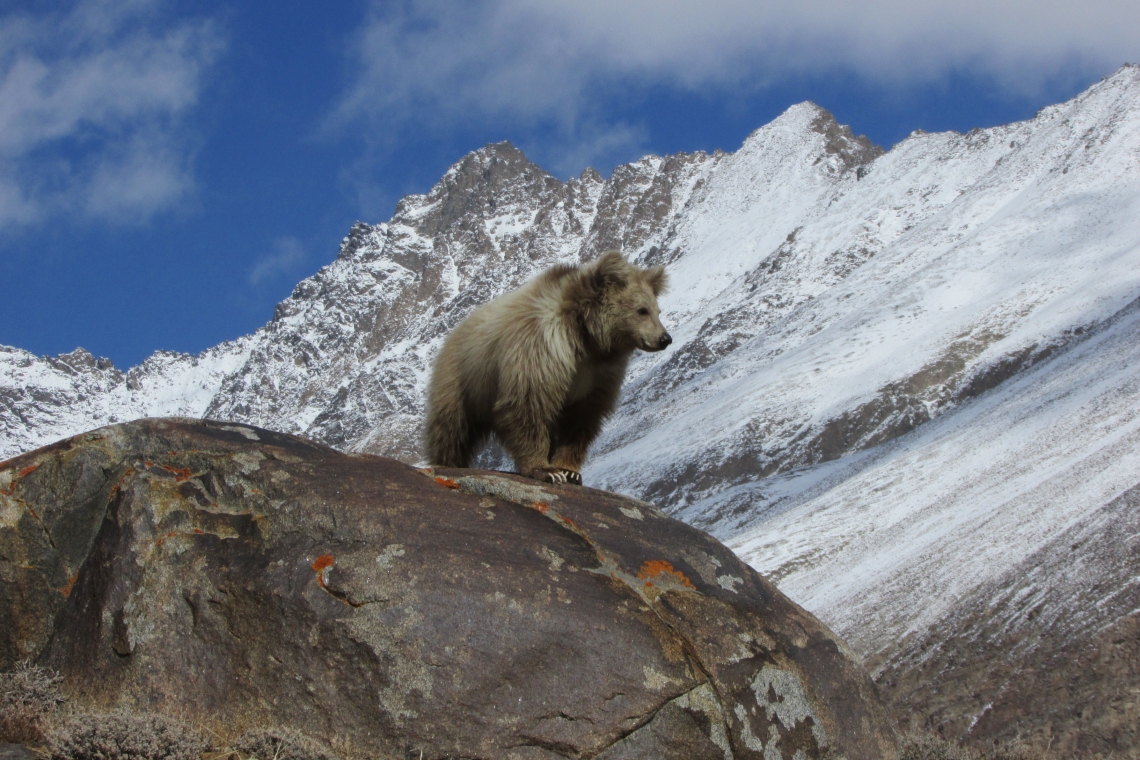
Brown bear_U arctos_Tajikistan Central Asia_light coat_K. Karimov

Brown bear_U arctos_Qinghai China_camera trap photovery light coat_Y Liu _ Chinese Academy of Forestry
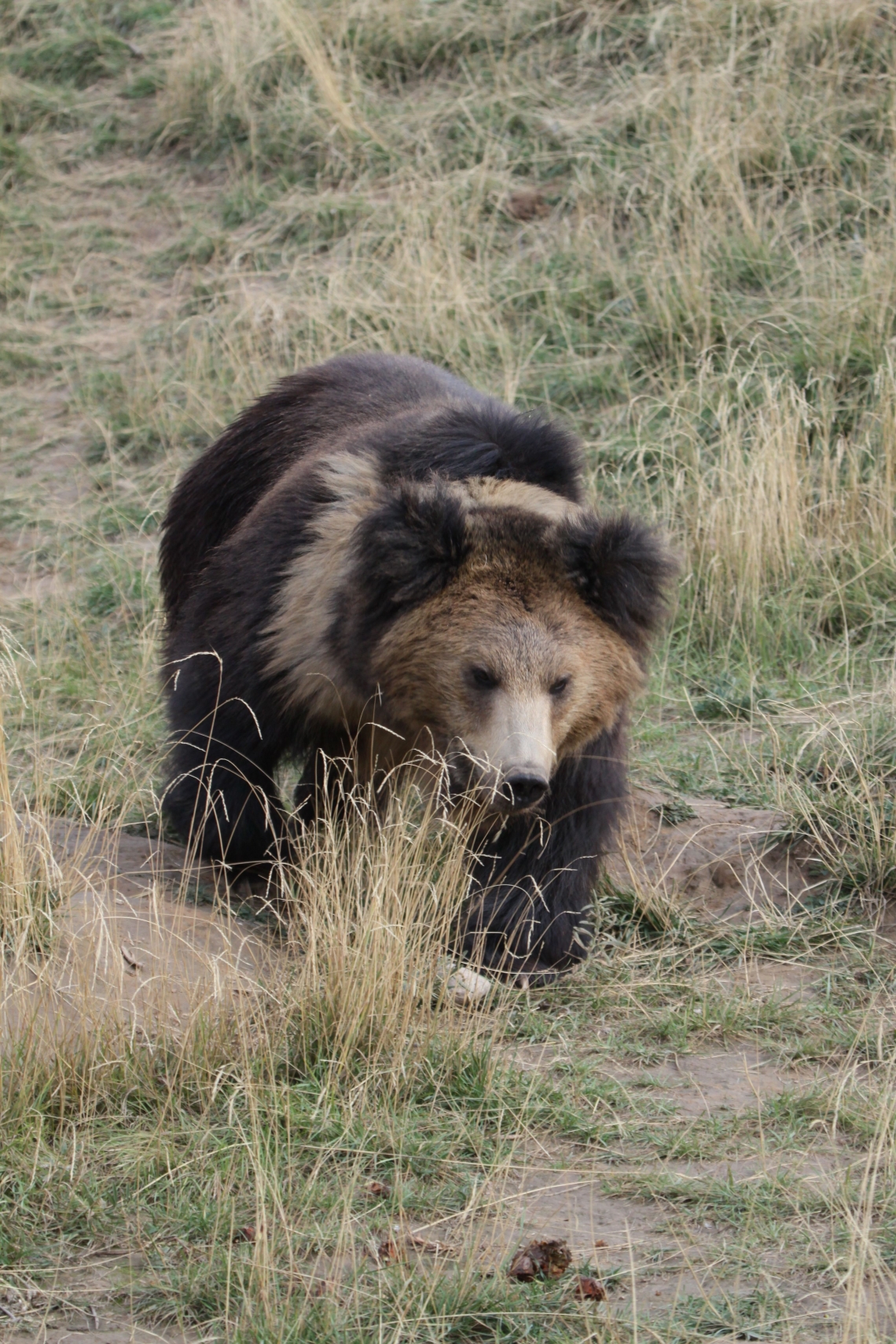
Brown bear_U arctos_western China Xining zoo_white collar around neck and chest__D Xiang
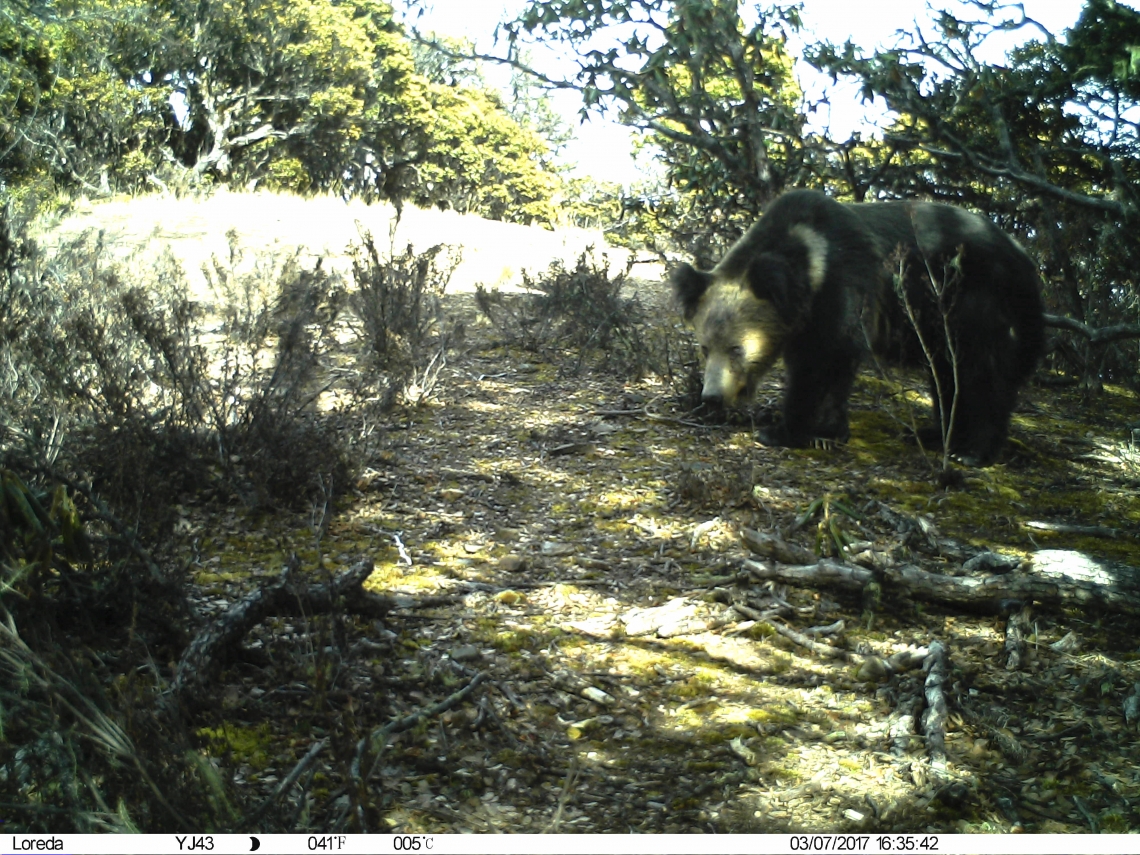
Brown bear_U arctos pruinosis_western China camera trap_black pelage_Li Sheng
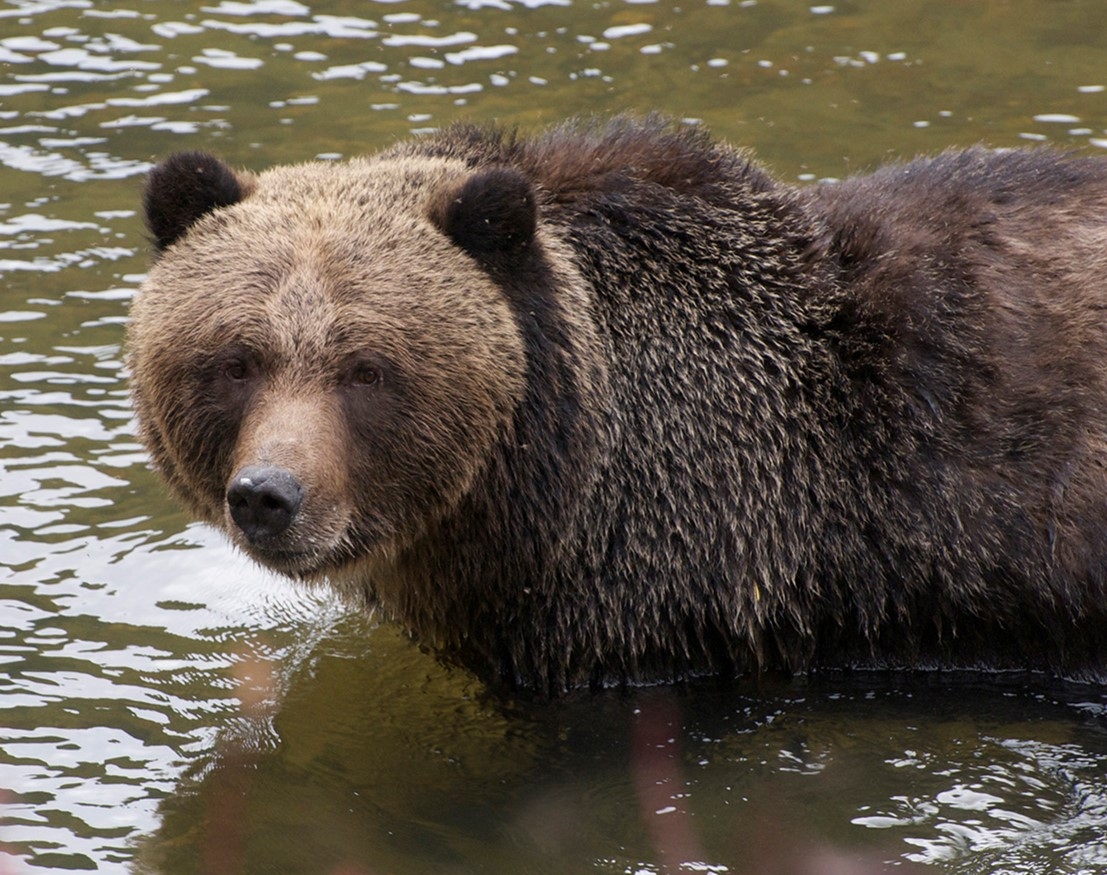
Brown bear_U arctos_British Columbia Canada_distinctive round concave face_J Beecham
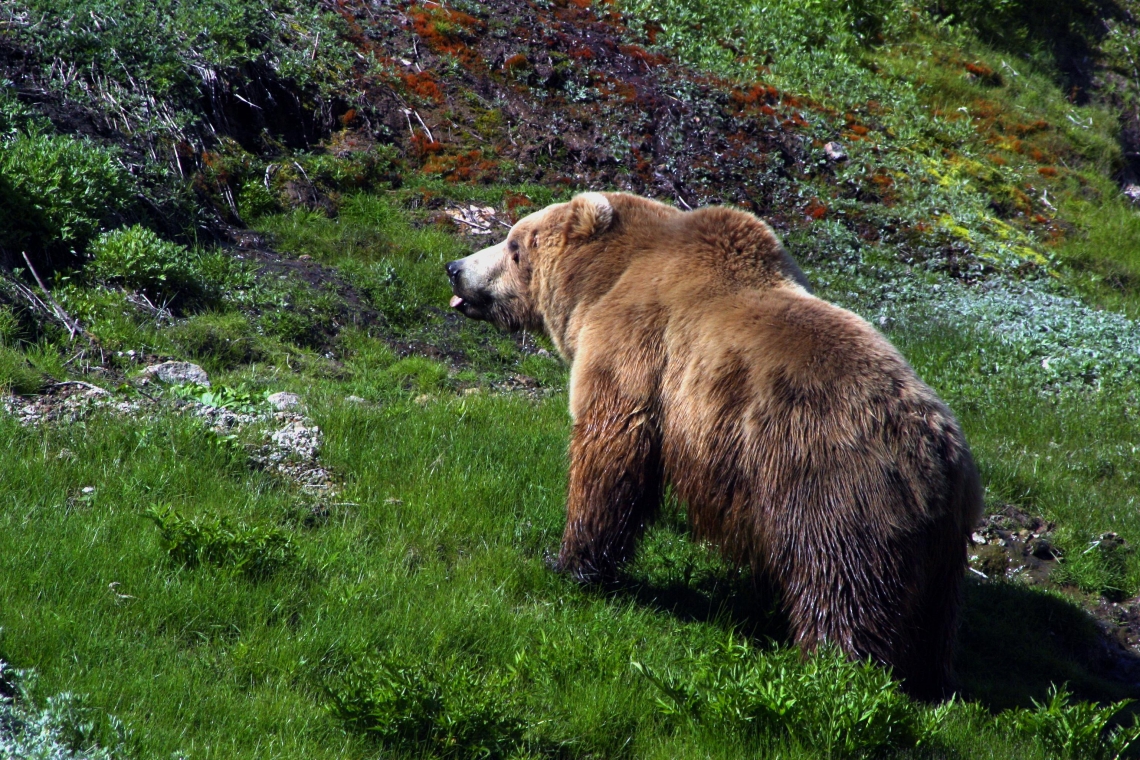
Brown bear_U. arctos_Russian Far East_large foraging bear with prominent shoulder hump_I. Seryodkin
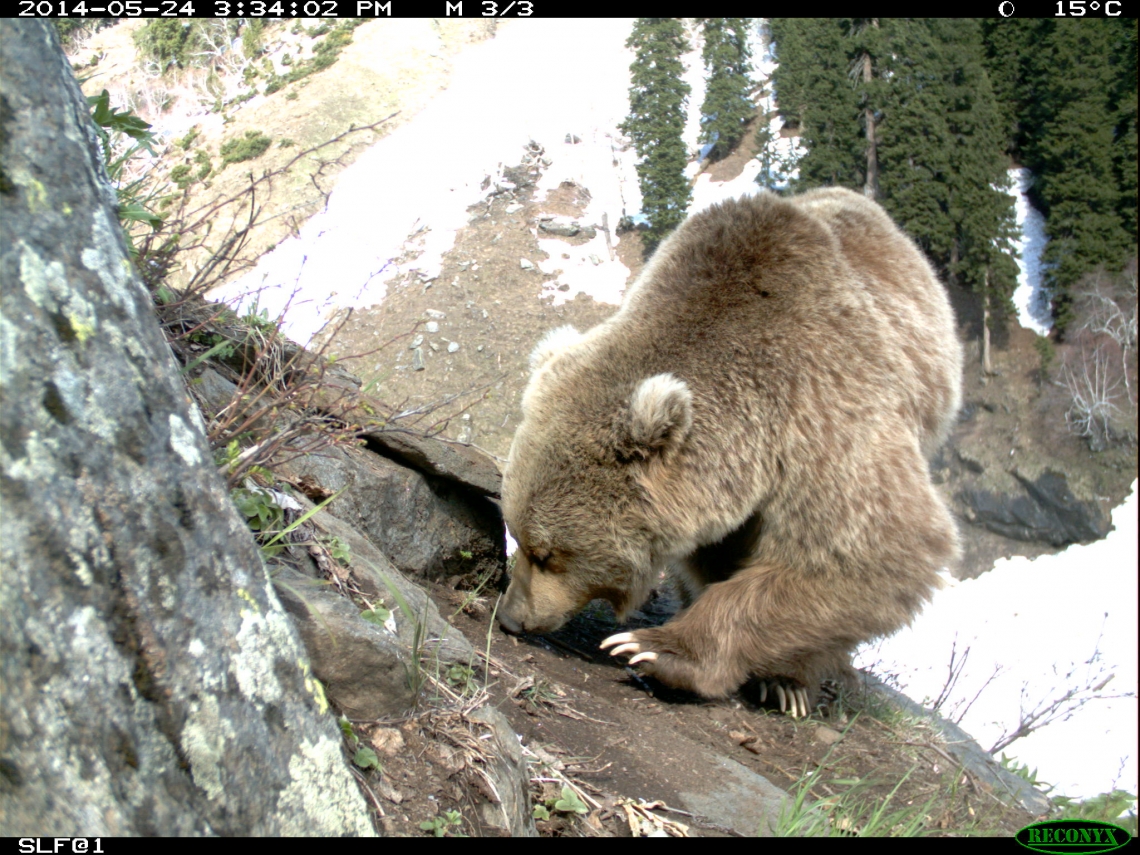
Brown Bear_U arctos, Machiara National Park Pakistan_preparing to dig with characteristic long claws, S, Hameed
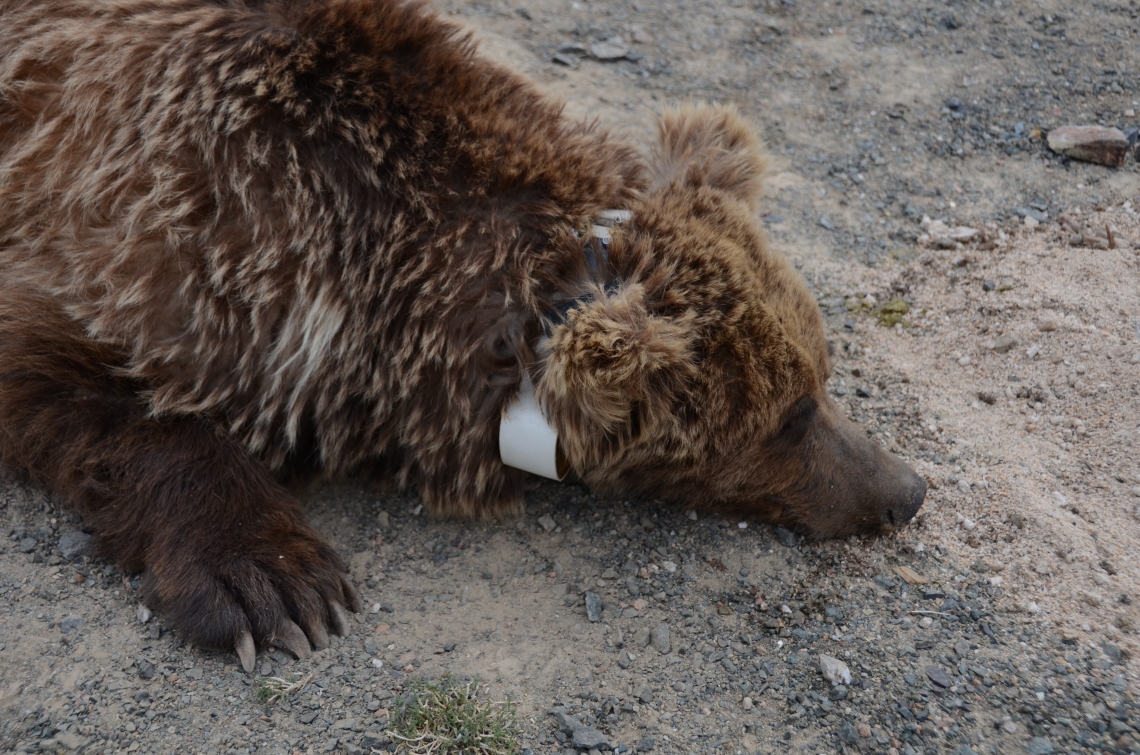
Brown bear, U arctos, Gobi Desert Mongolia_short stubby claws from digging_M Proctor
Distinctive behaviors: Other than for mating or mothers rearing offspring, brown bears are generally solitary. However, they congregate and feed peaceably close together at rich feeding areas, such as salmon spawning streams, berry fields, or in some talus slopes where moths assemble by the millions to seek shelter.
Brown bears scent mark by rubbing their backs and necks on trees and even power poles. Adult males dominate the rubbing in the spring-summer mating season but the ratio of male to female rubbing tends to equalize later in summer and fall. This species is much less a tree-climber than other bears. In North America, where they have long claws, they rarely climb; in Europe, where their claws are shorter, small brown bears are able to climb.
Home range sizes of brown bears vary enormously with food availability. Males can occupy several thousand km2 and overlap with ranges of many other bears. When food resources are concentrated, female home ranges can be as small as 50 km2.
Away from people, brown bears tend to be diurnal, often with a mid-day nap, but the same individuals become more nocturnal when frequenting areas near people. They are especially crepuscular-to-nocturnal in Europe where they have been subject to centuries of persecution. Likewise, European brown bears have an unaggressive disposition (similar to that of an American black bear) presumably because through millennia of living near people in Europe, the most aggressive individuals were killed, so there has been strong selection for survival of less aggressive bears. In North America, brown bears may attack when they are surprised by an approaching person, or perceive a person to be a threat to their cubs, or encroaching on a rich but limited food source such as an ungulate kill. The notable aggressiveness of the grizzly bear earned it the name Ursus arctos horribilis.
Brown bears can become habituated to humans if they no longer view humans as a threat. They may become attracted to feeding opportunities near human settlements, roadsides, or railways. In Europe, subadults and females with cubs may choose to live near humans as a shield against infanticide by adult male bears.
In open areas, brown bears are often seen standing up, where they can see, or especially smell, farther. It is believed that the mythical yeti, an erect ape-like creature in the Himalayas, was conceived from brown bears (or Asiatic black bears) standing or even walking bipedally.
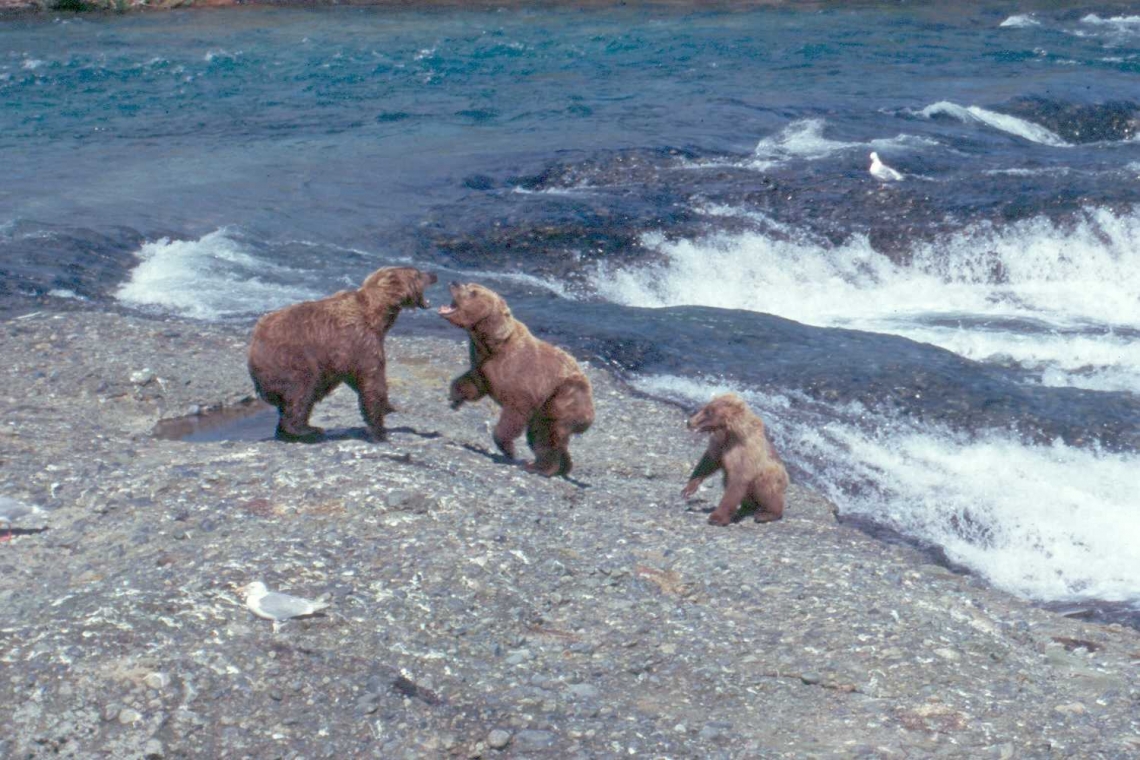
Brown bear_U arctos_McNeil River Falls Alaska_female protecting yearling_B McLellan

Brown bear_U arctos_Shiretoko National Park Hokkaido, Japan_feeding on salmon_K Kendall
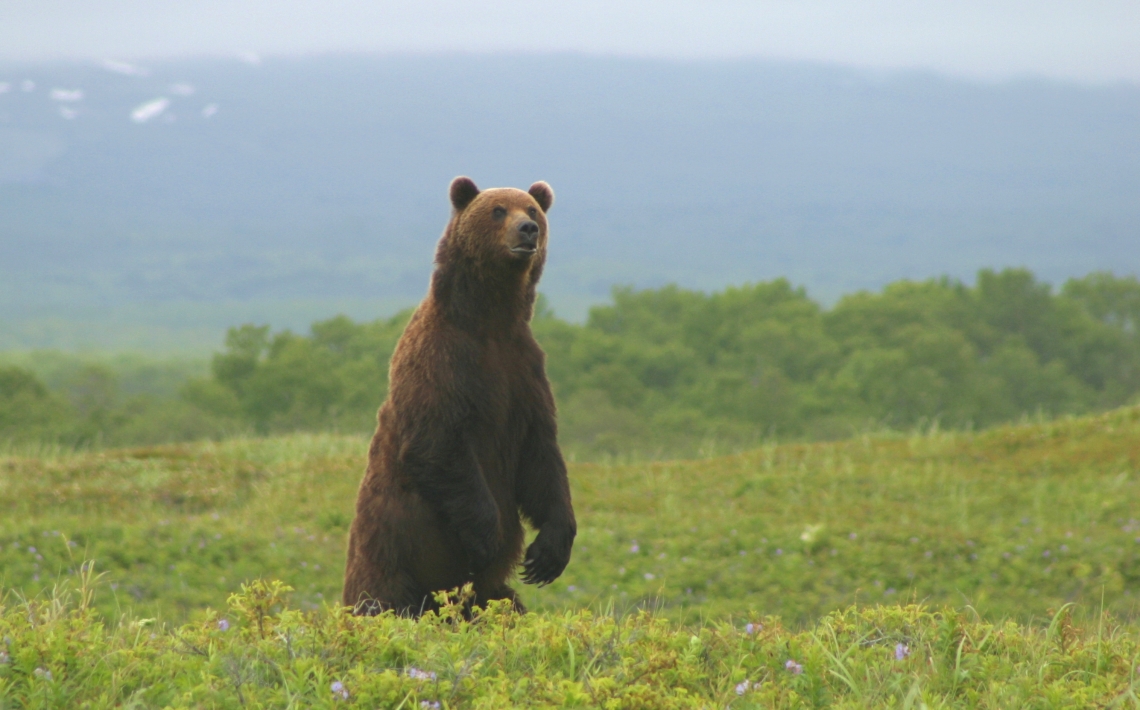
Brown bear_U arctos_Russian Far East_standing_ I Seryodkin
Brown bear_U. arctos_British Columbia Canada_rub tree sratching and scent marking_B McLellan